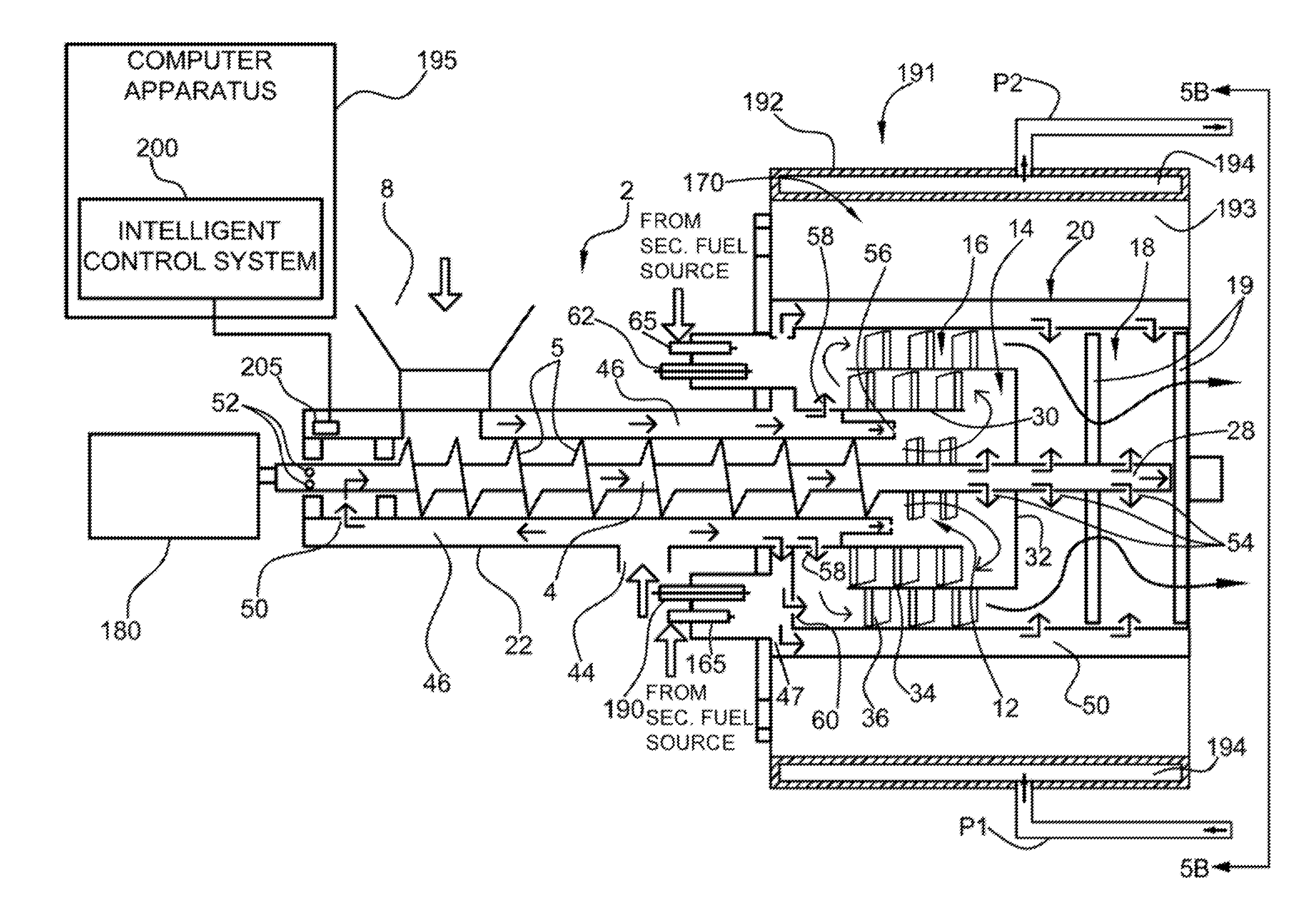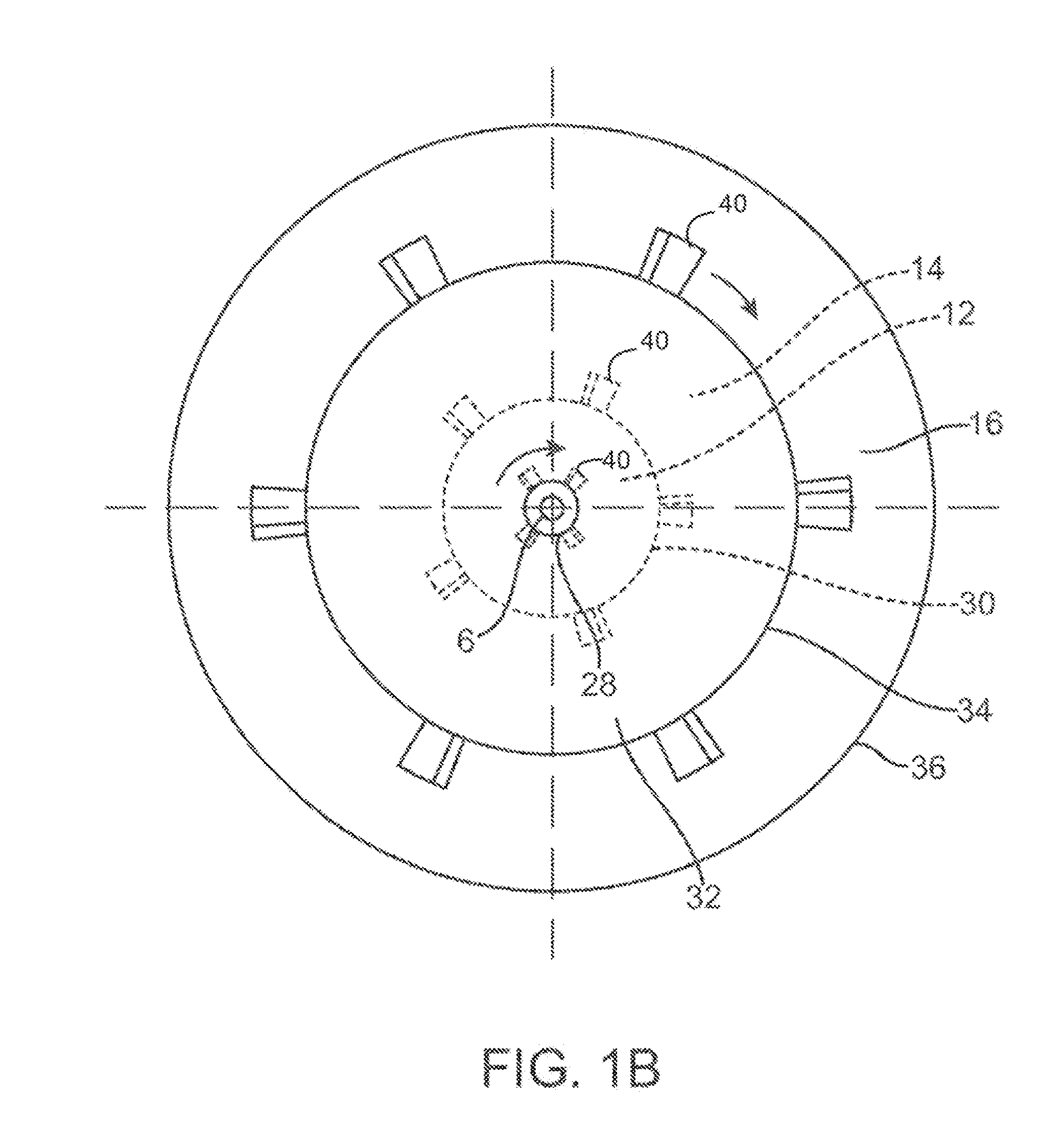Burner system for waste plastic fuel
a burner and plastic fuel technology, applied in the direction of solid fuel combustion, combustion types, lighting and heating apparatuses, etc., can solve the problems of long burners and significant heat loss, and achieve the effects of reducing burner size, improving heat efficiency, and improving oxidation
- Summary
- Abstract
- Description
- Claims
- Application Information
AI Technical Summary
Benefits of technology
Problems solved by technology
Method used
Image
Examples
second embodiment
[0061]Referring now to FIG. 2, air for incinerating waste plastics is supplied from a suitable source (or sources) at an air inlet 44, like, for example, a fan or a blower (not shown) used to enhance the air intake. Air next enters inner air passage 46 defined by tubular double-walled housing portion 22. Some of the air in passage 46 is released into the space for conveyor screw 4 from an orifice 50, enters shaft lumen 6 via inlets 52, and continues to flow in the direction of combustion unit 10, while simultaneously cooling the conveyor screw 4, thus increasing the reliability of the conveyor screw 4 and its bearings. The remainder of the air in the annular inner air passage 46 continues in a downstream direction and partially encircles first combustion chamber 12. A radial air passage 47 fluidically connects axially extending inner air passage 46 with axially extending outer air passage 48, which surrounds combustion unit 10 and discharge section 18 of the burner.
[0062]As shown i...
third embodiment
[0065]Referring to FIGS. 4 and 5, there is shown an alternative or third embodiment of another burner system, generally referred to as 160. The burner system 160 includes another embodiment of a combustion unit, generally referred to as 170. In this embodiment of combustion unit 170, nose cone 30 is eliminated. Elimination of nose cone 30 increases air flow within and exiting combustion unit 170. The increased air flow and exhaust allows combustion of substantially all solid fuels moved into combustion unit 170 by conveyor screw 4. This ability to obtain substantially complete combustion of solid fuels substantially increases energy output of burner system 160 while reducing energy consumption and therefore improving overall financial performance of burner system 160 by about 50%.
[0066]Referring again to FIGS. 4 and 5, a variable frequency drive (hereinafter, VFD) motor, such as variable speed, direct drive motor 180 is coupled to conveyor screw 4 for revolving or rotating conveyor ...
PUM
 Login to View More
Login to View More Abstract
Description
Claims
Application Information
 Login to View More
Login to View More - R&D
- Intellectual Property
- Life Sciences
- Materials
- Tech Scout
- Unparalleled Data Quality
- Higher Quality Content
- 60% Fewer Hallucinations
Browse by: Latest US Patents, China's latest patents, Technical Efficacy Thesaurus, Application Domain, Technology Topic, Popular Technical Reports.
© 2025 PatSnap. All rights reserved.Legal|Privacy policy|Modern Slavery Act Transparency Statement|Sitemap|About US| Contact US: help@patsnap.com



